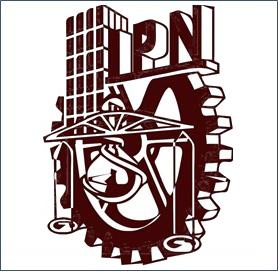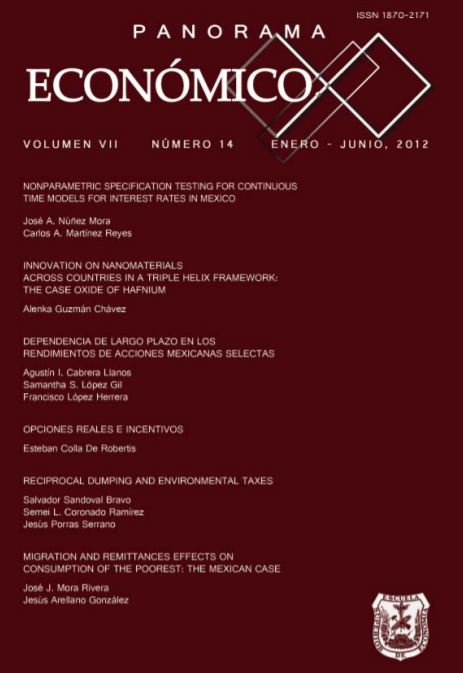Innovation on nanomaterials across countries in a triple helix framework: The case oxide of hafnium
Contenido principal del artículo
El objetivo de este artículo es identificar las capacidades de innovación y los flujos de conocimiento de firmas, universidades e institutos de investigación en el campo de nanomateriales en diversos países, particularmente de nanomateriales basados en hafnium. Mediante del análisis de las patentes concedidas en la Oficina de Patentes y Marcas de los Estados Unidos (USPTO) en el campo de hafnium, se busca conocer la contribución de los empresarios, gobierno e instituciones universitarias y de investigación a la innovación y cómo los flujos de conocimiento se expresan en el ámbito de los inventores. Asimismo, nos proponemos explorar cómo en México, las firmas, universidades y gobierno contribuyen a desarrollar capacidades científicas y tecnológicas para desplegar este nuevo paradigma tecnológico y, por tanto, a favorecer el alcance tecnológico en el campo de los nanomateriales.
Abricht, L., H. Freikamp and U. Schumann (2006), “Identification for skill needs in nanotechnology”, Cedrofop Panorama Series: 120, Luxemburgo, Office for Official Publications of the European Communities.
Alvarez, Fregoso O., J. G. Mendoza Alvarez and F. Sanchez Sinencio (2009), “The growth and structure of Cd0.95Fe0.05Te thin films grown by radio frequency sputtering”, Journal of Applied Physics, vol. 64, no. 8.
Aguirre-Tostado, F. S., D. Layton, A. Herrera (2007), “X-ray photoelectron spectroscopy study of the oxidation of Hf Se passivated Si (001)”, Journal of Applied Physics, no. 102.
Arora, A. and A. Gambardella (1990), “Complementarity and External Linkages: The Strategies of the Large Firms in Biotechnology”, Journal of Industrial Economics, vol. 38, no. 4, 361-379.
Choi, J.H., Y. Mao and J. P. Chang (2011), “Development of hafnium based high-k materials-A review” Materials Science and Engineering: R: Re- ports, vol. 72, no. 6. Publisher: Elsevier, 97-136.
Cohen, W. M. and D. A. Levinthal (1990), “Absorptive Capacity: A New Per- spective on Learning and Innovation”. Administrative Science Quarterly, vol. 34, no. 1, 128-152.
EOPUS (2009), Executive Office of the President of United States, “National Nanotechnology Initiative FY 2009 & Highlights”, http://www.nano.gov/ NNI_FY09_budget_summary.pdf.
ETC Group (2005), Potenciales repercusiones de las nanotecnologias en los mercados de productos básicos: consecuencias para los paises en desarrollo dependientes de productos básicos. http://www.etcgroup.org, 75 pp.
Etzkowitz H. and L. Leydesdorff (2000), “The Dynamics of Innovation: From National Systems and ‘Mode 2’ to a Triple Helix of University- Industry-Government Relations”, Research Policy, vol. 29, no. 2, 109- 123.
Etzkowitz, H. (2002), “The Triple Helix of University-Industry-Government, Implications for Policy and Evaluation”, Science Policy Institute, Working. Paper, 17 pp.
Foray, D. (2006), The Economics of Knowledge, Cambridge: MIT Press, 287 pp. Freeman, C. (1987), Technology Policy and Economic Performance: Lessons from Japan, London: Pinter Publishers.
Gibbons, M., C. Limoges, H. Nowotny, S. Schwartzman, P. Scott, and M. Trow (1994), The new production of knowledge: the dynamics of science and research in contemporary societies, London: Sage.
Kaiser, U. (2002), An Empirical est of Models Explaining Research Expenditures and Research Cooperation, International Journal of Industrial Organization, vol. 20, no. 6, 747-774.
Kamien, M. and 1., Zang (2000), “Meet me halfway: research joint ventures and absorptive capacity, International Journal of Industrial Organization, vol. 18, no. 7.995-1012.
Keita, 1. O. Wataru, E. Keisuke, G. Yasuhito and T. Hiroshi (201 1), “’Development of a vacuum transistor using hafnium nitride field emitter arrays”, Journal of Vacuum Science and Technology B: Microelectronics and Nanometer Structures, vol.29,no. 2, March. http://ieeexplore.ieee.org/xpl/RecentIssue.jsp?punumber=4915583.
Juma, C. and L. Yee-Cheong (Coords.) (2005), Innovation: Applying Knowledge in Development, United Nations Millennium Proiect http://www. unmillenniumproject.org/reports/index.htm.
Intel, Corp. (2010), “Hafnium-based Intel@ 45nm Process Technology”, www.intel.com/technology/45nm/index.htm.
Lundvall, B.A. (Ed.) (1992), National Systems of Innovation, London, Pinter Publishers.
Miyasaki, K. and N. Islam (2007), “Nanotechnology systems of innovation- An analysis of industrial and academia research activities”, Technovation, vol,27, no. 11, Publisher: Elsevier, 661-675.
Mowery, D., R. Nelson, B. Sampat and A. Ziedonis (2004), lvory Tower and Industrial lnnovation. University-Industry Technology Transfer Before and After the Bayh-Dole, Stanford California, Stanford University Press.
Nelson, Richard (Ed.) (1993), National Innovation Systems: A Comparative Study, New York: Oxford University Press, New York.
Palmberg, C., H. Dernis and C. Miguet (2009), Nanotechnology: an overview based on indicators and statistics, Paris, OCDE.
Sábato, J. (1975), El pensamiento latinoamericano en la problemática ciencia- tecnología-desarrollo-dependencia, Buenos Aires: Ed. Paidós.
Silberglitt, R. S., P. S. Anton (2006), “The Global Technology Revolution 2020”, rAnD Corporation, Security Research Division, U.S.A.
Sparks, C. M., P. Lysaght and T. Rhoad (2005), “Measurement of the silicon dioxide concentration in hafnium silicate gate dielectrics with a TXRF”, International Centre for Diffraction Data, Advances in X-ray Analysis, vol. 48 (290).
Stéphane, D. (2011), “New Hafnium Precursors for High-K Dialectrics Molecular Hafnium Precursors for Metal Oxide Thin Fils in CMOS Architectures”, FRINNOV Technologies Portafolio, CNRS Ref. 01947- 01 http://www.fist.fr/index.php?option=com_content&task=view&lang=& id=453>.
Veugelers, R. and B. Cassiman (2005), “R&D cooperation between firms and universities. Some empirical evidence from Belgian manufacturing”, In- ternational Journal of Industrial Organization, vol. 23, no. 5-6, 355-379.
The World Nanotechnology Market (2006), www.nanoinf.jo/whitepaper wp143.pdf.
Záyago-Lau, E. and G. Foladori (2010), “La nanotecnología en México: un desarrollo incierto”, Economía, Sociedad y Territorio, vol. 10, no. 32, Jan- April: 143-178.
Detalles del artículo

Esta obra está bajo una licencia internacional Creative Commons Atribución-NoComercial-SinDerivadas 4.0.







